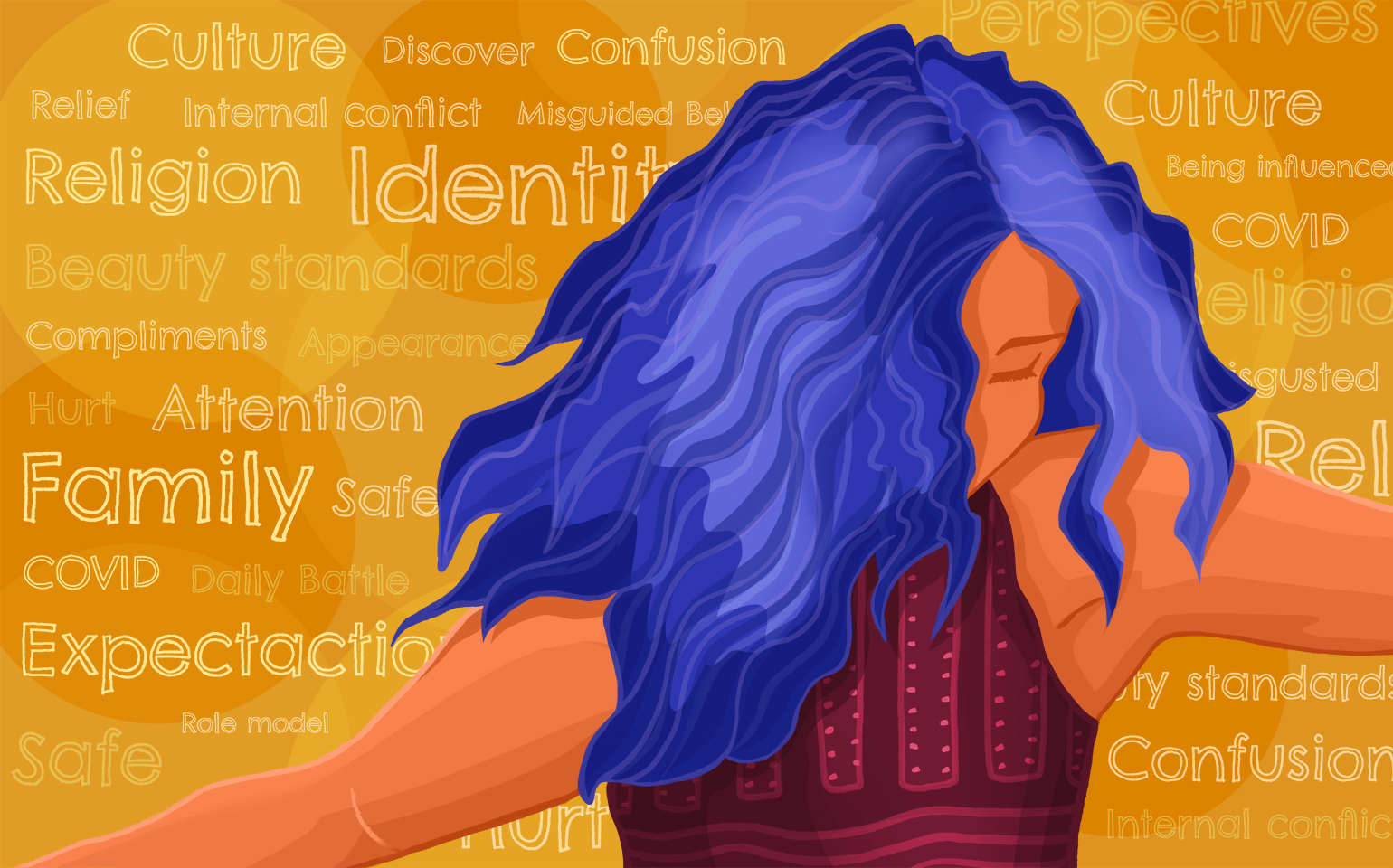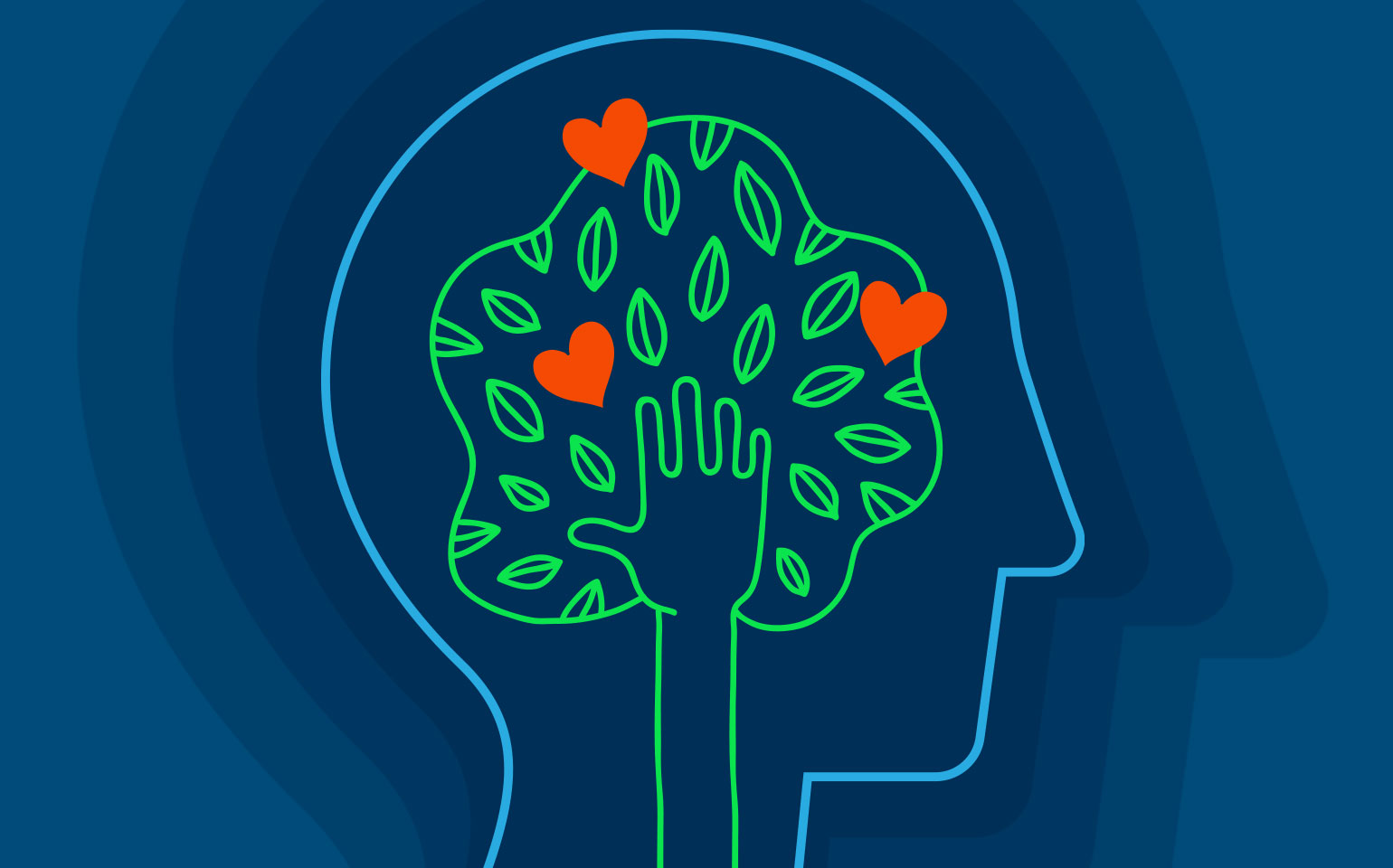Learning to Live Without
My hair has always been a part of my identity. While attending elementary and middle schools, few people had my features and hair texture. Fitting in with other kids was a daily battle against my hair.
Though I wanted to change my curly hair to look more like other kids, my mother wouldn’t allow it. She didn’t want me to ruin my curls by dying, straightening, or relaxing my hair. I was stuck with it.
As a baby, it seemed I had inherited more of my mother’s characteristics: straight hair, light skin, and large eyes. However, as I grew older, those same characteristics evolved into blacker features such as curly hair, dark skin, and thin eyes. Being a mixed-race child, I received compliments for my appearance, particularly my hair. It was a foreign concept at first for myself, as I always felt my hair was the biggest reason I didn’t fit in and receiving compliments didn’t feel normal.
My mother doesn’t have curly hair, so she did her best to maintain what pieces of black culture I have in me. This would cause a rift between my mom and my dad’s families (they had completely different perspectives), and it would only be the beginning of my battle with my hair, which would ultimately define my struggle to fit in.
My mission from age 12 until I was 14 would be to grow out my hair. Throughout all of middle school and the first few months of high school, I refused to cut or trim my hair because I didn’t like how short curls looked on me.
My hair piqued the interest of not only my classmates—who would touch and compliment it—but also of my mother and her family. Though I envied their long silky Latina hair, they adored my luscious bouncing curls, which only added to my confusion. I didn’t yet understand that the way I saw myself was so different from what others saw.
Because my mom grew up religious, she was not permitted to cut her hair. She and her sisters learned to cherish their hair that almost dragged on the floor. I couldn’t help but envy the girls who seemed to naturally fit in, sitting on the field at school, and playing with their long, straight hair without a care in the world.
When COVID’s inevitable isolation hit and my hair began to grow, I started getting acne. My hair hid the flare-ups, but also irritated my skin, making matters worse. I was more than relieved to be trapped inside. I could hide my face from the shame and soon I began to use my bangs to hide parts of my face. My hair was my defence mechanism. It made me feel safe from any glances or comments about my appearance.
The thought would sometimes occur that it didn’t matter if I left my house naked, because all anyone would notice was my hair. I had the impression that if I kept my hair maintained, I would meet the societal beauty standards it seemed everyone held me to. Everyone had their own ideas about how my hair should look, and I let them consume my own perception of my identity.
When I straightened my hair at the age of 17, I fell in love with curtain bangs (which are shorter strands of hair on each side that curl like curtains). The straight hair also disguised another insecurity of mine, my face shape. Unfortunately, I didn’t realize how much damage constantly straightening my hair had caused until I tried to get it curly again, but the curls wouldn’t last.
I began to miss my curly hair. I was under the assumption that, no matter how many times I took the flat iron to my hair, it would always be curly. Not only did I prove myself wrong, I began to hate my hair. It was too damaged to style, and I missed displaying my unique curls. I wouldn’t get compliments and I didn’t feel right inside. I felt more exposed than ever and not only did it scare me, but it made me depressed. My hair was everything and now I had suddenly lost it. That was the flaw in curly hair, you could lose it just as fast as you got it. It didn’t help that I could see the same pressure to fit in was also affecting my younger sisters.
As an older sister you’re a role model, friend, and third parent all-in-one, and when I looked at them, I saw the same misguided belief in their identity I’d had. This made me question my authenticity and my identity.
I battled daily with my hair and it would only lead to long cries that made me almost hate myself. I wanted to break mirrors and scream on a rooftop. I had always dreamed of having long hair and even hurt myself while trying to straighten my hair because putting a flat iron to my hair for a certain amount of time can destroy curl texture. What I felt most of all was disgust. How could I claim to be half Black with curly hair when I’d done everything to hide that part of me? How could I be me when I was destroying what makes me who I am?
One cold winter night as I was about to turn 18, I realized I’d had enough when I picked up the scissors, took a strand of hair, and cut. I couldn’t breathe at first, but I continued even as my eyes blurred with tears. Despite the look, I felt relief. I eventually had to go to a salon because I had cut unevenly. This time my grandma on my dad’s side supported me through this stressful time. My hair has become a bob and I see it grow every day. It seems that everyone in my family has a different outlook on my hair and at this point I’ve learned how to hear these perceptions and constructive criticisms but not internalize it.
I’m still discovering my identity and navigating my internal conflict with my hair. I’ve also learned that even if my hair is short, my identity does not stem from it, and I won’t allow my hair to control my confidence. Today, my hair is much healthier as I have it trimmed regularly and, deep down, I know that it can always grow back. I don’t regret cutting my hair in that moment of desperation because now I can teach my sisters the lessons I’ve learned: how to love their ever changing hair. In the meantime, I’m learning how to live without giving into the pressures of fitting in.




